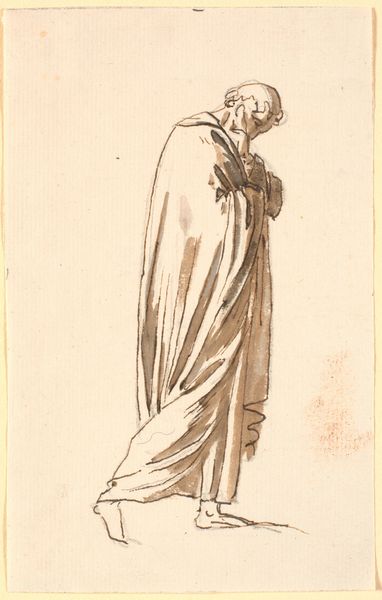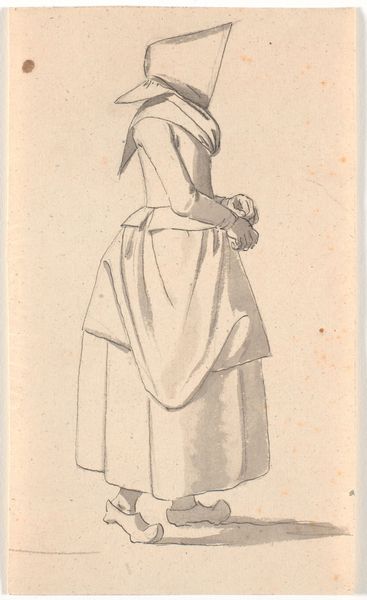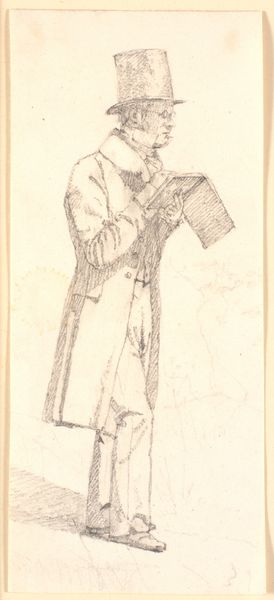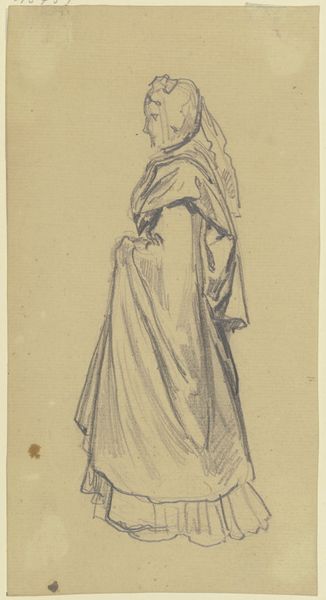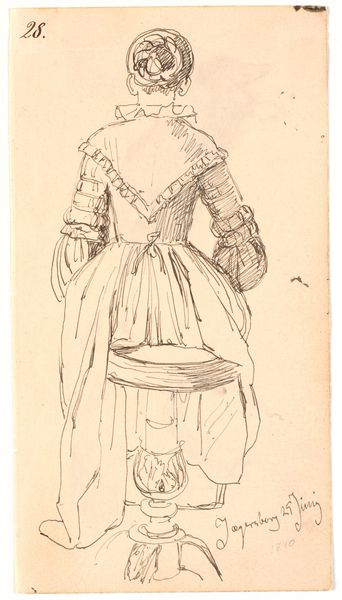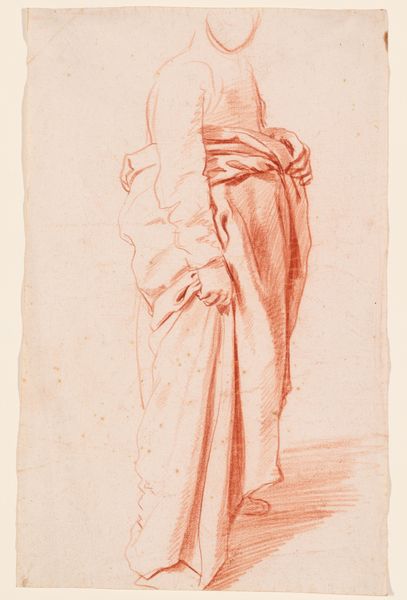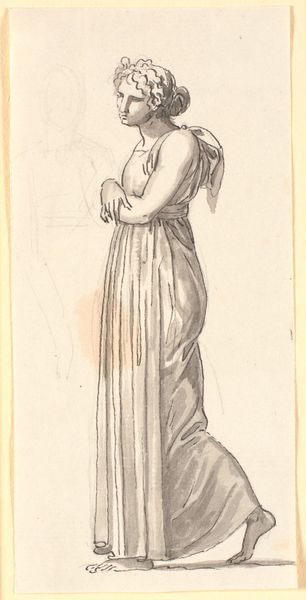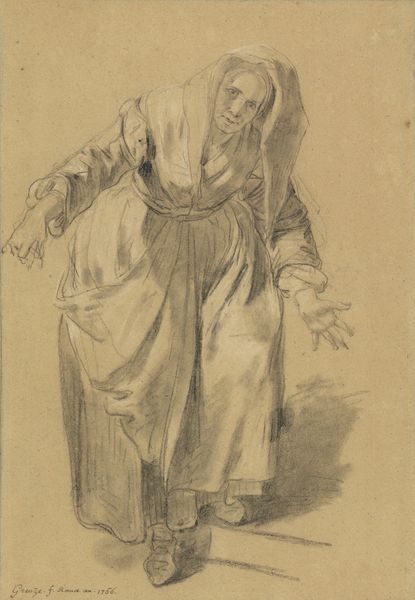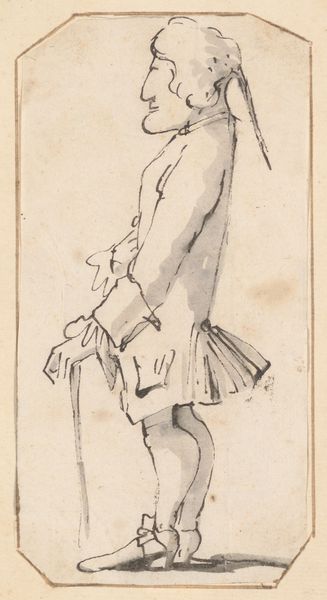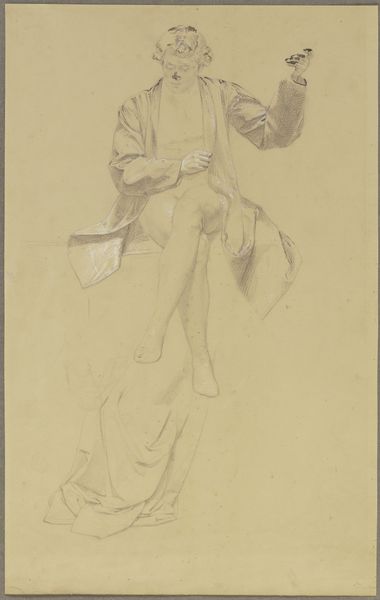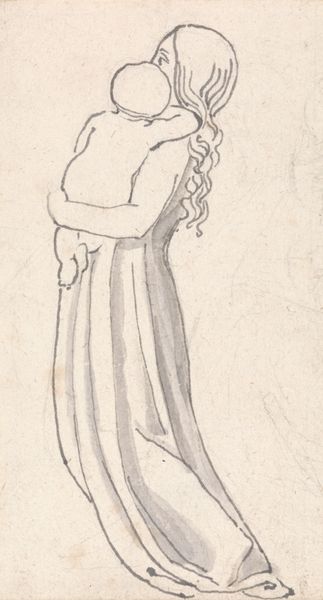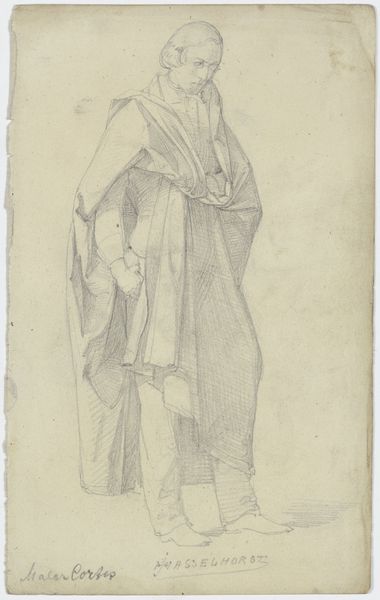
drawing, ink
#
portrait
#
drawing
#
neoclacissism
#
figuration
#
ink
Dimensions: 266 mm (height) x 156 mm (width) (bladmaal)
Curator: Oh, I adore how deceptively simple this appears! There's such an intriguing stillness to it. Editor: Yes, I was just thinking how remarkably composed this work is; considering its age, it possesses a thoroughly modern aesthetic. Well, "modern" isn't quite right, is it? What can you tell me about this remarkable piece? Curator: What we have here is a work by Nicolai Abildgaard. He was active primarily in the late 18th century and early 19th century. This drawing, titled "A female figure with a jug in her right hand", comes to us via the Statens Museum for Kunst. Editor: A jug in her right hand, and some kind of tambourine, maybe? The subject matter is so striking. Is this supposed to represent an ideal figure, from antiquity, or mythology? It feels… weighted with symbolism, yet very calm. Curator: Spot on! Abildgaard was a key proponent of Neoclassicism, so yes, it evokes ancient ideals. These artists turned to classical antiquity in pursuit of what they perceived as moral and aesthetic purity. The jug and the tambourine that you observed probably carry some sort of classical, or religious undertones, given the cultural conventions. Editor: So, less about capturing a fleeting moment, and more about embodying timeless virtues through carefully chosen emblems. A bit staged, or perhaps idealized, like classical sculptures of gods. Curator: Precisely. Every aspect – the drape of the garment, the placement of her feet in relation to the flora– reflects these ideas of a new kind of Republic of virtue that has come to prominence due to, in part, Enlightenment thought. Even the sepia ink and simple lines are telling. This choice is intended to communicate authenticity as if it could be lifted directly out of the ancient world of Greece and Rome. Editor: It’s amazing how much meaning they packed into such a minimal composition. I am curious, would the artist consider their work accessible for all social levels? Curator: Oh, that’s very unlikely, as artworks in this period generally catered to the elites with both financial and academic resources to understand the historical references, social symbolism, and philosophical contexts. I really appreciate the artist's adept skill in presenting these new concepts while referencing a sense of historical timelessness, drawing visual language directly from antiquity. Editor: Me too; thanks for clarifying! I shall never see it quite the same again, which is rather the point, isn’t it?
Comments
No comments
Be the first to comment and join the conversation on the ultimate creative platform.
